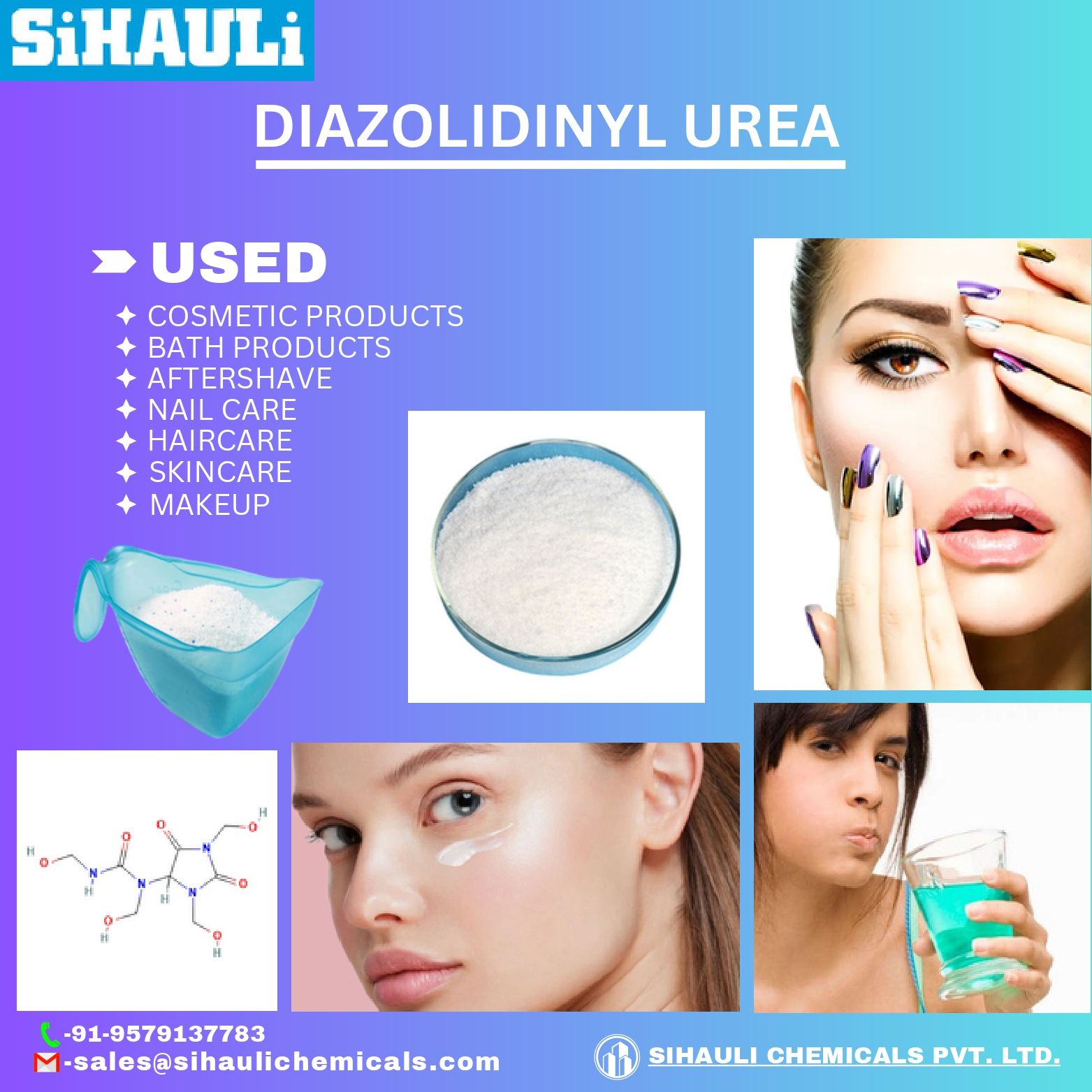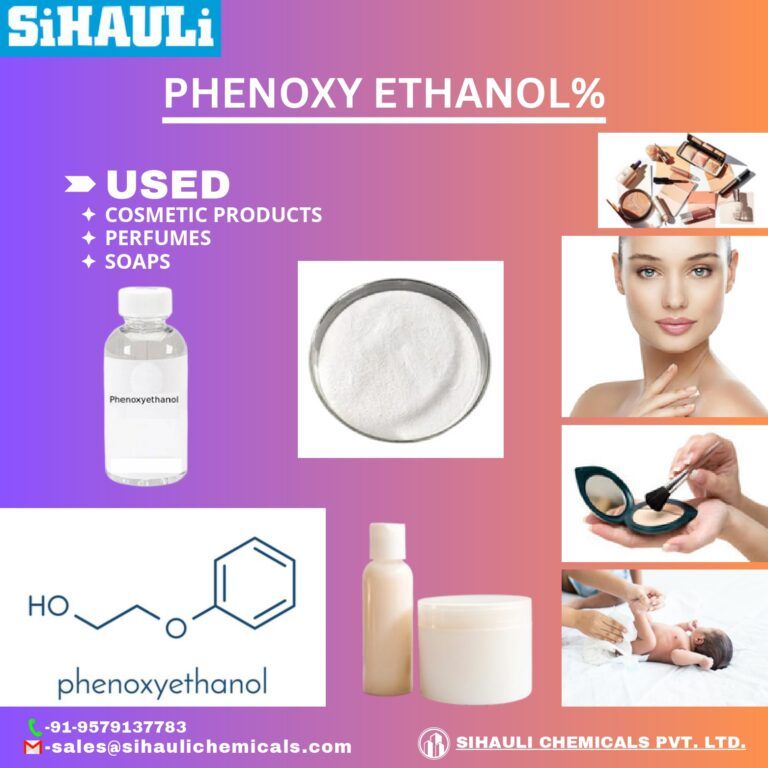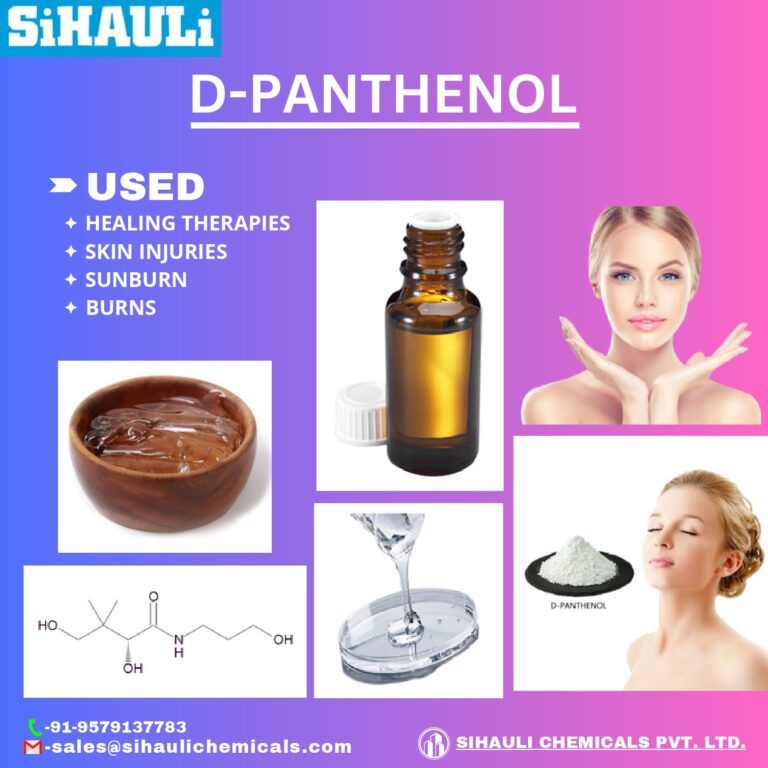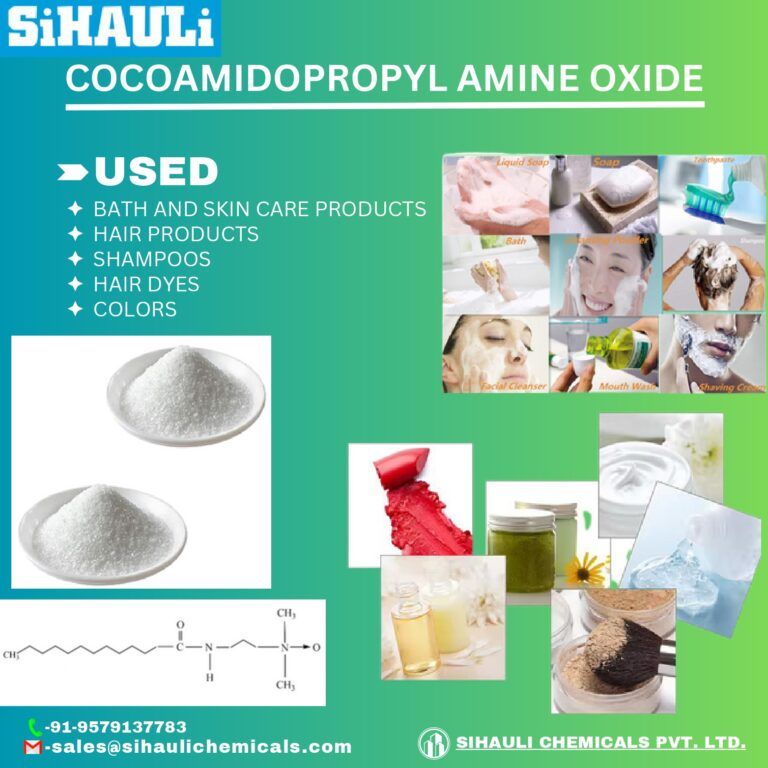Diazolidinyl Urea is an effective preservative against bacteria, yeast and molds. This helps to protect the product from inadvertent contamination by the consumer during use. Diazolidinyl Urea works by slowly releasing a small amount of formaldehyde into the formlation.
An antimicrobial that’s predominantly used as a preservative in cosmetic products, protecting them from from the bacteria, yeast and molds known to cause spoilage. It can be found in virtually every type of personal care products including as facial moisturizer/lotion, sunscreen, anti-aging treatment, cleanser, styling gel, foundation, shampoo/conditioner, eye cream, deodorant and mouthwash.
Diazolidinyl urea is an ingredient used in skincare and cosmetic products to help ensure the safety and longevity of the product.
Diazolidinyl urea is a preservative, preventing the growth of bacteria, protecting your products from spoilage. Diazolidinyl urea is a water-soluable preservative that is considered to be safe at concentrations up to 0.5%. It usually comes in a fine white powder and is often combined with other parabens and preservatives in order to keep the product safe from use contamination and spoilage.
Diazolidinyl urea is found in a large variety of products such as makeup, aftershave, haircare, skincare, nail care, and bath products.
Is Diazolidinyl Urea Good For Skin?
Diazolidinyl urea isn’t an ingredient that is going to benefit the skin. It doesn’t work like a vitamin C or vitamin A. Diazolidinyl urea is only used to improve the safety and longevity of a product, protecting it against yeasts, molds, and bacteria.
Preservatives are an important part of the formulation process as they ensure that your product remains safe from contamination. Contamination can occur, inadvertently through use or through exposure to the air. Ensuring the prevention of bacteria, yeasts and molds mean that the product is safe for use for a longer period of time. Without preservatives, most products would expire within weeks.
Is Diazolidinyl Urea Safe For Acne?
Yes, diazolidinyl urea is considered to be safe for acne. It is not suspected to cause irritation or increase the severity of breakouts or flare-ups.
Is Diazolidinyl Urea A Formaldehyde-Releasing Ingredient?
Diazolidinyl urea can be a formaldehyde-releasing preservative. While that may sound scary, the reality is the amount of formaldehyde that is released is well below the recommended exposure limits. According to one study the amount of formaldehyde that you would be exposed to by using a formaldehyde-releasing preservative is similar to eating a pear.
There is also evidence to suggest that proteins and other ingredients contained in the product would actually cause the formaldehyde to evaporate or inactive before causing any harm to the body.
Is Diazolidinyl Urea Vegan?
Yes, diazolidinyl urea is considered a vegan ingredient as it is usually authentically produced. Keep in mind that the other ingredients in the formulation will determine if a product has vegan ingredients.
The other thing to consider when looking for vegan products is whether they are cruelty-free or not. This information is usually readily available on the packaging or on the brand’s website.
Is Diazolidinyl Urea Safe?
The safety of diazolidinyl urea has been evaluated by the Cosmetic Ingredient Review Expert Panel, a group responsible for reviewing the safety of skincare and cosmetic ingredients. The Expert Panel has reviewed the available data on diazolidinyl urea and found the ingredient to be safe in its current uses and concentrations.
The research conducted on diazolidinyl urea by the Cosmetic Ingredient Review Expert Panel determined that it has low irritation potential to the eyes. However, it was not found to be sensitizing to the skin or produce phototoxic effects. It’s use is restricted to maximum concentrations of 0.5%. This limit in concentration is mostly due to mild irritation that can occur on the skin in concentrations greater that this maximum.
In 2006, the Cosmetic Ingredient Review Expert Panel, reviewed any new data and reaffirmed the above conclusion on the safety of this ingredient.




